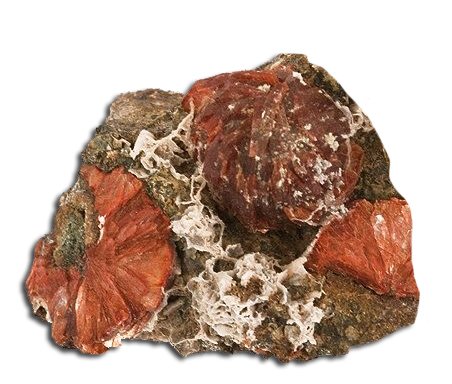Zeolites – from curiosity to cornerstone

Some two and a half centuries ago, in 1758, the Swede, Alex Fredrik Cronstedt (1722–1765) anonymously published his ‘‘An Essay Towards a System of Mineralogy’’ [1,2].
This text revolutionised the science of mineralogy by advocating that minerals be classified by their chemical composition, rather than by their physical properties, as had been the practice to that time. It also introduced the mineralogical classification of zeolite minerals.
Although Cronstedt (Fig. 1) had introduced the term zeolite two years previously in a paper read to the Swedish Academy [3,4], that original publication has become widely available as an English translation only recently.
However, the ‘‘Essay’’ – with full attribution – was a publication of sufficient influence to enjoy a second edition, published in English in 1770 and another in 1772, which was revised and enlarged in 1788 [5], almost a quarter of a century after Cronstedt’s death[6,7], bringing his classification system, and the newly discovered zeolite minerals, to the attention of scientists throughout Europe [8,4]. Thus, as we mark the passing of the 250th anniversary of the publication which gave currency to the term zeolite (describing minerals which either occur naturally or can be synthesized in the laboratory with many of them having no known natural counterparts), it is interesting to reflect on how such ubiquitous and useful materials were for so long regarded as mere laboratory curiosities, and on the influences and personalities which liberated them from the curio cabinets of university chemistry and geology departments to become the industrial and domestic workhorses they are today.
Cronstedt was moved to coin the term ‘‘zeolite’’ in 1756 [3,4], after he observed that on heating a natural zeolite mineral, the solid material appeared to bubble and the particles to dance (intumescence), as water was lost as steam from (as we now know) the pores of the mineral. Although Cronstedt’s original sample is widely reported as stilbite (Fig. 2), Colella and Gualtieri concluded recently that Cronstedt’s zeolite was most likely predominantly stellerite (Fig. 3) mixed with minor amounts of stilbite [4]. Cronstedt combined the Greek words ‘zein’ (to boil) and ‘lithos’ (rock) to form the word zeolite. The son of a Swedish military officer, Cronstedt is also widely known as the discoverer of nickel, which he reported in 1751. Five years earlier Cronstedt had turned his back on the military career his family expected of him, enrolling instead at the University of Uppsala, with the intention of studying mathematics.
So as to broaden his experiences, particularly with respect to an understanding of the scientific method, Cronstedt enrolled in a course on ‘‘The Art of Experiment and Chemistry’’ delivered by the famous chemist, Georg Brandt (1694–1768), who had discovered cobalt in about 1730. Cronstedt went on to become achemist and mineralogist, as well as a mining expert with the Swedish Bureau of Mines. He was one of the leading exponents of the analysis and characterisation of small mineral samples by the observation of the colours produced when the sample is heated in the intense flame of a blowpipe. The use of this technique allowed him to develop a new classification of minerals based, not on their appearance as had hitherto been the case, but on their chemical composition.
Unbeknownst to Cronstedt, he had stumbled upon a class of materials that were not just porous, but had pores and cavities of molecular dimensions (0.3–1.5 nm diameter). Despite Cronstedt’s influence and reputation, zeolites remained largely ignored by chemists for the better part of 200 years. They were not unknown – samples of zeolites were generally prominently displayed in the mineral cabinets of many chemistry departments throughout the world, with about 20 zeolite types having been identified by 1850 [11], the first authenticated zeolite being chabazite, characterised in 1792 [12]. However, for most of the two centuries after Cronstedt’s discovery, the only samplesavailable for study were natural zeolites, which, at the time, were regarded as comparatively rare minerals, found predominantly only as large (mm–cm in size) isolated crystals in basaltic rocks, but never in large deposits of relatively pure materials. The geological wisdom was that zeolites were found in trace amounts in basalts. No reliable synthetic routes had been discovered to these curious minerals, nor was there any method of purifying them – dissolution resulted in the irretrievable loss of their crystallinity.
However, they did receive some study. In 1857, Damour demonstrated that the loss of water observed by Cronstedt was reversible, and that zeolites underwent seemingly endless dehydration– hydration cycles [13]. Next year, 1858, the German chemist, Eichorn, reported on the ion-exchange properties of zeolites. [14]
Source: http://www.sciencedirect.com/science/article/pii/S1387181110004592



